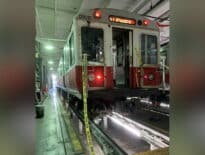Even as mortgage interest rates hit levels not seen since the fall of 2009, early indications show America’s prospective homebuyers appear to be adapting, not quitting the market.
For the second week in a row, the Mortgage Bankers Association’s nationwide mortgage market survey shows purchase applications have increased week-over-week. The number of these applications were up 2.7 percent in the week ending May 6 compared to the week before, ending April 29. Purchase applications in the latter were up 4 percent from one week earlier.
The increase in applications came even as the average interest rate on a 30-year, fixed-rate home loan hit 5.27 percent on May 5, according to Freddie Mac. For the seven days ending April 28, that number was 5.1 percent. The last time these averages breached 5 percent was the seven days ending Sept. 17, 2009.
“The increase in mortgage applications last week was driven by a strong gain in application activity for conventional and government purchase loans, even as mortgage rates rose to their highest level – 5.53 percent – since 2009. Despite a slow start to this year’s spring homebuying season, prospective buyers are showing some resiliency to higher rates,” Joel Kan, the MBA’s associate vice president of economic and industry forecasting, said in a statement.
Total numbers of purchase applications are 7.7 percent below where they were in the same week last year, the MBA reported.
Adjustable-rate loans appear to be buyers’ weapon of choice to combat rising rates.
The number of applications for conventional ARM loans jumped 18.9 percent week-over-week for the seven days ending May 6, a 44.3 percent spike over the same week in 2021. For government ARM loans – covering FHA, USDA and VA mortgages – those figures were even higher: a 46 percent jump week-over-week and a 611 percent jump compared to May 6, 2021.
ARMs made up 10.8 percent of all mortgage applications – up from 9.3 percent the week prior – 13.3 percent of conventional and 2 percent of government last week.
A glance at interest rates offers one explanation. Freddie Mac reported the average rate on a 5/1 ARM jumped during the seven days ending May 5 – to 3.96 percent.
Still, adjustable-rate loans have a long way to go before they reach levels seen just before the Great Recession, when around one-third of buyers used them according to MBA records. This prevalence received a large portion of the blame for the waves of foreclosures that swept the country in the wake of the 2008 financial crisis.




 |
| 


